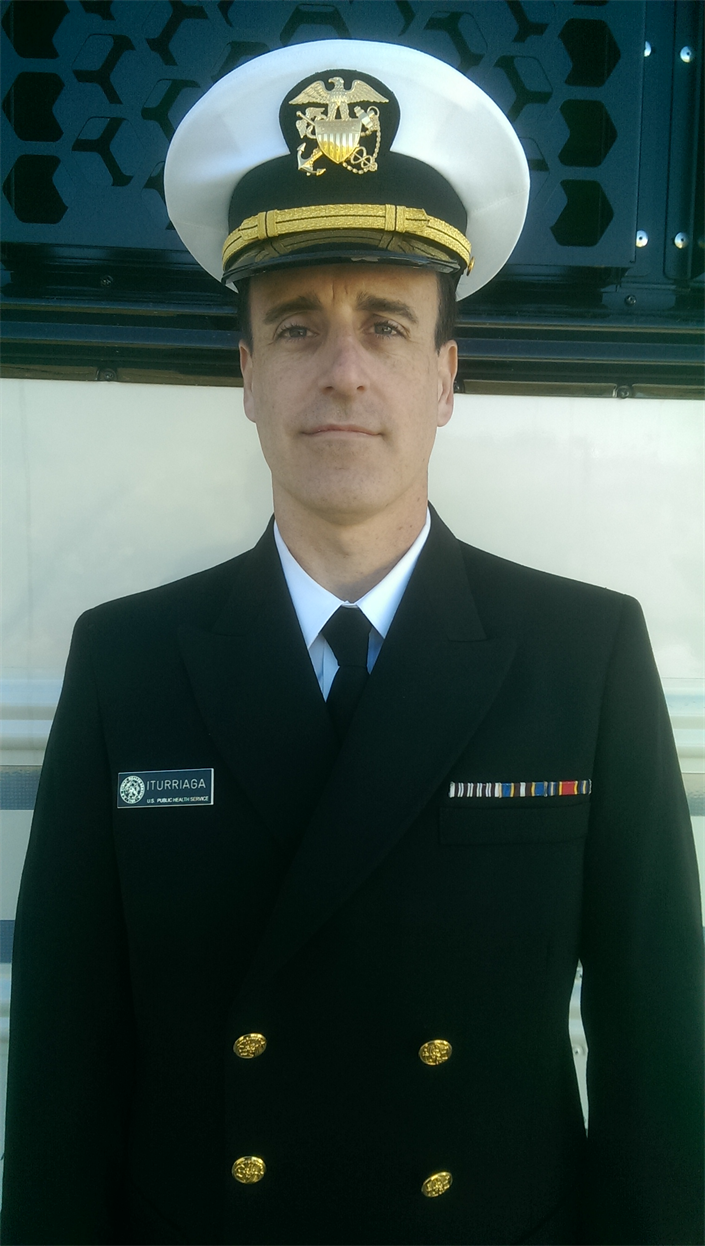2016 Deployment for the Humanitarian Crisis in the Rio Grande Valley
By LCDR Luis Iturriaga
On June 30, 2014, President Obama declared a “humanitarian crisis” in the Rio Grande Valley region due to a large influx of women and children from Guatemala, Honduras, and El Salvador crossing the border from Mexico into Texas. The Department of Homeland Security (DHS) opened a new family residential facility in Artesia, NM, to manage the surge. I was detailed to the area by USPHS Command as a Subject Matter Expert to create and launch a mental health program for this population that would meet National Policy and Residential Standards.
Upon arrival and housed in the barracks, I first noticed the barren area with no nearby accommodations. I entered into what would eventually become the clinic. It was an empty storage building; inside, some other PHS officers were talking about how they had never worked with children and families. There was a sense of trepidation, disorientation, and excitement. For the next 30 days, working at least 15 hours per day, the team of medical, administrative, and mental health professionals would create a medical and mental health program for a very vulnerable population. The team would come together and create a strong bond that remains intact today. Most officers had limited experience working with minors and found this a daunting task. Although the task seemed overwhelming and formidable, all officers were able to come together as a team and complete all objectives.
In addition to the everyday rigor of creating a clinic, because of the high profile-visibility mission, officers met with officials from international government, dignitaries from the United Nations, U.S. senators, DHS cabinet members, and media outlets. Each day, officers, including myself, worked tirelessly in extreme heat and poor conditions, moving supplies, modifying building structures, training government officials, creating policy and procedures, stocking supplies, and maintaining some sense of sanity. We were constantly under pressure to have the clinic ready for the first 200+ residents, which comprised infants, children, adolescents, and adults arriving on the first day. Planning was challenging at times because our efforts were sometimes met with community resistance, likely in part due to concerns about who would be housed in the facility and potential impacts on their community. For this mission, officers were asked not to be in uniform when traveling to the city, and were vigilant about bearing in mind the community concerns pertaining to the mission.
Hundreds of residents arrived on the first day, scared and confused. After meeting with them, it seemed a giant weight was lifted off their shoulders and a sense of relief was apparent once they realized they would have sustenance and a temporary place to stay. This sense of calm and appreciation among the families we served is a vivid memory I will never forget. There was never any training that could have prepared me for this experience, as hundreds of desperate women and children were looking at me for an answers about what was to come. The transition back from this fulfilling deployment to my daily life has been smooth; however, I will never forget the faces of those I was able to provide for, especially the faces changing from desperation to appreciation.

Next Deployment Narrative Back to Deployment Narrative homepage